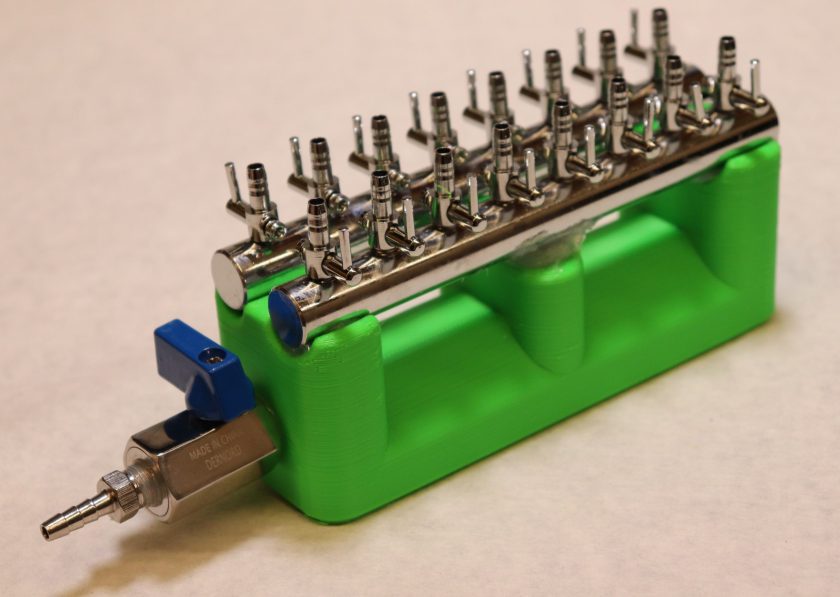Published: June 20th, 2020 Last Modified: June 23rd, 2020
We all know the sheer joy of doing just a handful of minipreps at a time. You pull out all the flicks of the wrist and bits of finesse you’ve built over the years. Once you move past…oh…8 minipreps, and it becomes work. After 16 or 24 minipreps and you’re into re-evaluating your life choices. Those wash steps add up! What about midi-preps? Maxi-preps? Protein columns? Yeah, being able to process those in parallel in a efficient manner sure would be nice. In comes….THE VACUUM MANIFOLD!!!!
What does the beastie do? You apply a vacuum at the barbed connector, open the valve, and the vacuum is distributed between the little inlets, allowing you to suck away 16 columns worth of wash buffer at once! It’s not the cheapest build at 55$ worth of parts and access to a 3D printer, but considering alternatives start at 150$ and go into the hundreds, it’s worthwhile (and fun!) to build your own. Let’s go!
Continue reading “Making (and using) a vacuum manifold!”



